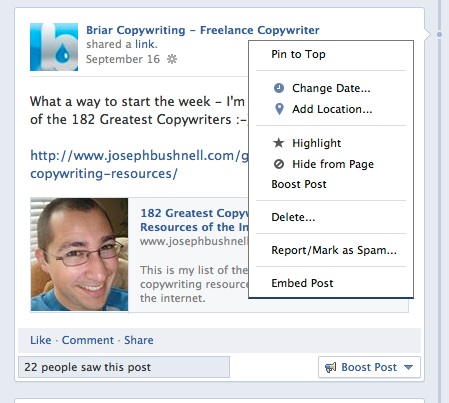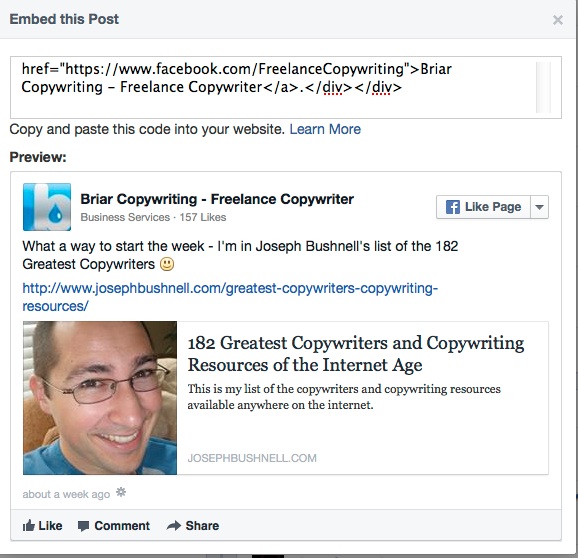Entries from October 2013 ↓
October 7th, 2013 — LinkedIn
LinkedIn has long been thought of as the professionals’ social media platform.
But a recent newspaper article offers grim reading for its millions of users.
According to the Independent LinkedIn has been accused of a ‘hack and spam’ attack on its members in a marketing tussle.
A law suit filed in California on behalf of four US-based users claims:
“…that LinkedIn “hacks” into users’ email accounts before harvesting email addresses and sending spam to their contacts, endorsing its products and services, without obtaining users’ consent or requesting a password.
The plaintiffs allege that the emails, designed to persuade recipients to sign up to LinkedIn, contain the Linkedln member’s name and likeness so it appears as if the member is endorsing the social network.”
LinkedIn is contesting the lawsuit and states that it takes personal security seriously and never sends out information on a user’s behalf unless given permission.
Care to connect?
All that aside, as a user of LinkedIn, I have noticed a recent increase in the number of invitations I receive to connect with complete strangers.
The whole idea of the platform is to make connections with people you know. What’s more, it clearly states that you should only accept invitations from people you know.
In light of the article in the Independent above, I did a bit of digging and found several unhappy LinkedIn users reporting receiving messages telling them they are now connected to people they didn’t know. Not only that, they didn’t send any connection requests. Plus one guy reported, after looking at his ‘requests sent’ tab, he discovered numerous invitations sent to people he didn’t know. Yes, it would appear as though the platform had sent them itself.
If you get a request to connect from someone you don’t know, or at least don’t think you know:
- Go to your inbox
- Click on the ‘invitations’ tab
- Click on the arrow beside the ‘accept’ box
This gives you the option to reply without accepting their connection request. That means you can ask them how they know you before deciding whether to ignore the invite or not.
The only way to avoid unsolicited invitations is to go to your ‘Account and Settings’ preferences and set it to require an email address whenever someone sends you an invitation. If you don’t want to do that and definitely don’t want to accept the request, click the ‘Ignore’ and then the ‘I don’t know’ link. LinkedIn is then notified and the individual won’t be able to send you another invitation and, should they get 5 such reports, their account is restricted.
Of course, the best way to avoid all of that is to only send requests to people you know.
Author: Sally Ormond, Copywriter and MD at Briar Copywriting Ltd. Follow her on Twitter and Google+
October 4th, 2013 — Google, Google search
Google has been playing again according to a recent post on HubSpot’s Inbound Marketing blog.
It is to encrypt all keyword searches except for click on ads.
What does that mean?
Basically, marketers won’t be able to get keyword data for searches made by people who aren’t signed in to Google.
Apparently, this move is to give “extra protection” to searchers, but considering the exception for ads, the more cynical would say it’s an attempt to get more people using Google AdWords.
The guys at Hubspot go on to say:
“You may recall that back in October 2011, Google (citing the reason of privacy), announced it would start encrypting search results for logged-in Google users (including any Google-owned product like YouTube, Google+, Gmail, etc.). This meant that marketers were no longer able to identify which keywords a person who was logged into Google.com searched for before they arrived at your website — even if they were using a web or marketing analytics platform like HubSpot. And without these keyword insights, marketers would have a much tougher time knowing which keywords to target to achieve greater visibility in search. No bueno.
“While Google initially said this would impact less than 10% of all searches conducted, we quickly noticed that percentage rise. In November 2011, we analyzed the keywords of HubSpot’s customers to find that more than 11% of organic search traffic was being affected, and by January of this year, we’d found that for the HubSpot website specifically, about 55% of the organic search we got each month was encrypted (and we’d seen that percentage steadily rising by about 4 percentage points each month). Things appeared to be getting more serious.”
Eek, not good.
So is there any way marketers can still measure and use search data?
The HubSpot guys say:
“It is still possible to tell how much traffic your website is getting from organic search. Although you might not know the exact keywords, you can still correlate the work you do to optimize your site and create content to increases or decreases in organic search.
“Other search engines like Bing and Yahoo continue to pass along keyword data. According to comScore, at present, Google.com has about 67% of search market share, Bing has 18%, and Yahoo has 11%. Although this will not provide the full picture, analytics tools like HubSpot can continue to show keywords for the 33% of searches that come from search engines like Bing, Yahoo, AOL, Ask.com, etc. This data will give marketers at least some indication of which keywords are the most useful.
“If you use Google AdWords for pay-per-click marketing, connect your company’s AdWords account to your Google Analytics account and use that data for keyword research.
“Rank will continue to play a role in helping measure the results of search engine optimization and content creation.”
You can read their full post here.
Author: Sally Ormond, Copywriter and MD at Briar Copywriting Ltd. Follow her on Twitter and Google+
October 2nd, 2013 — facebook
As an online marketer, you’re always looking for new ways to boost your customer engagement.
Have you considered embedding your Facebook posts on your website or blog?
Back in July, Facebook announced the ability to embed public posts onto your website using just a few lines of code.
How do you do that?
Posts from either your personal or business page can be embedded. All you have to do is click on the drop down arrow (top right of the post you want to embed) and you’ll see the option to embed post:

Once clicked, you’ll then get the code required. All you have to do is copy and paste it into your website or blog.

The only caveat is that you can’t embed public posts from within groups. Of course, the privacy settings of the poster will also affect your ability to use the post.
So what benefit will embedded posts bring?
Well, they can be used as:
- Testimonials
- Examples of Facebook usage if you blog about stuff like that
- Interactive material especially if it’s a statistic you want to share (referencing the original source with a link)
- A tool through which to share video
- A way of boosting engagement of a Facebook discussion
Not only that, but all embedded posts include a ‘Like’ button for the page, so you could also increase your fan base.
Over to you
Is this news to you, or are you already using it?
If so, what have been your experiences? Good or bad.
Leave a comment below
Author: Sally Ormond, Copywriter and MD at Briar Copywriting Ltd. Follow her on Twitter and Google+








